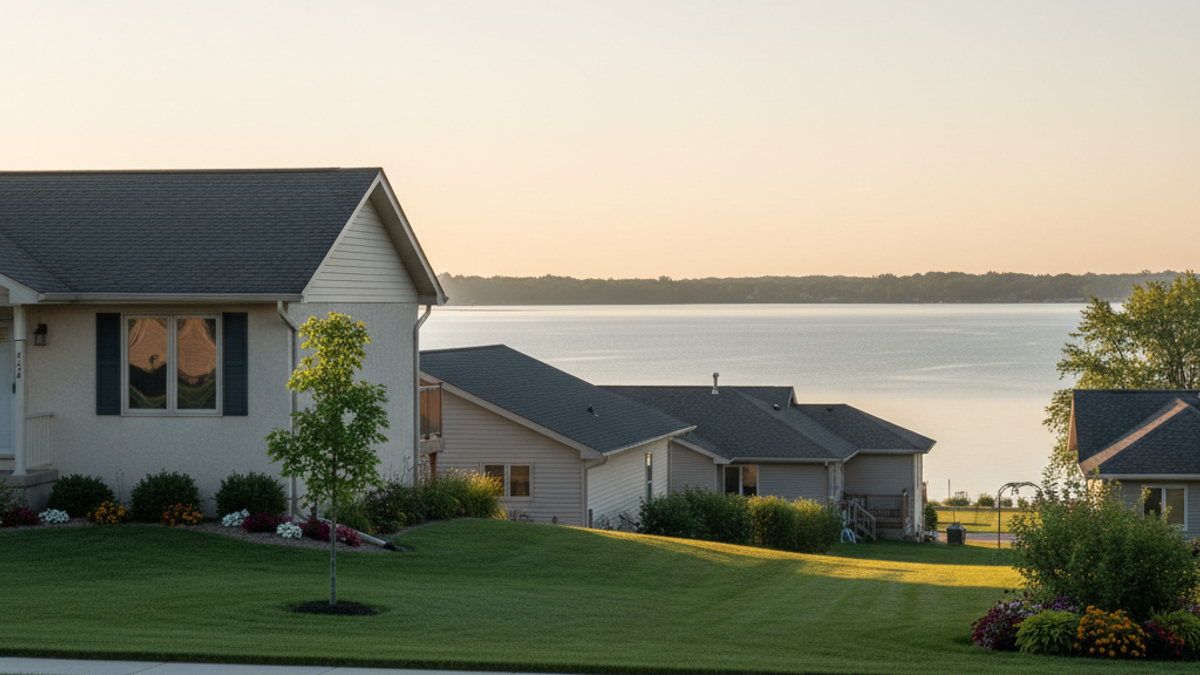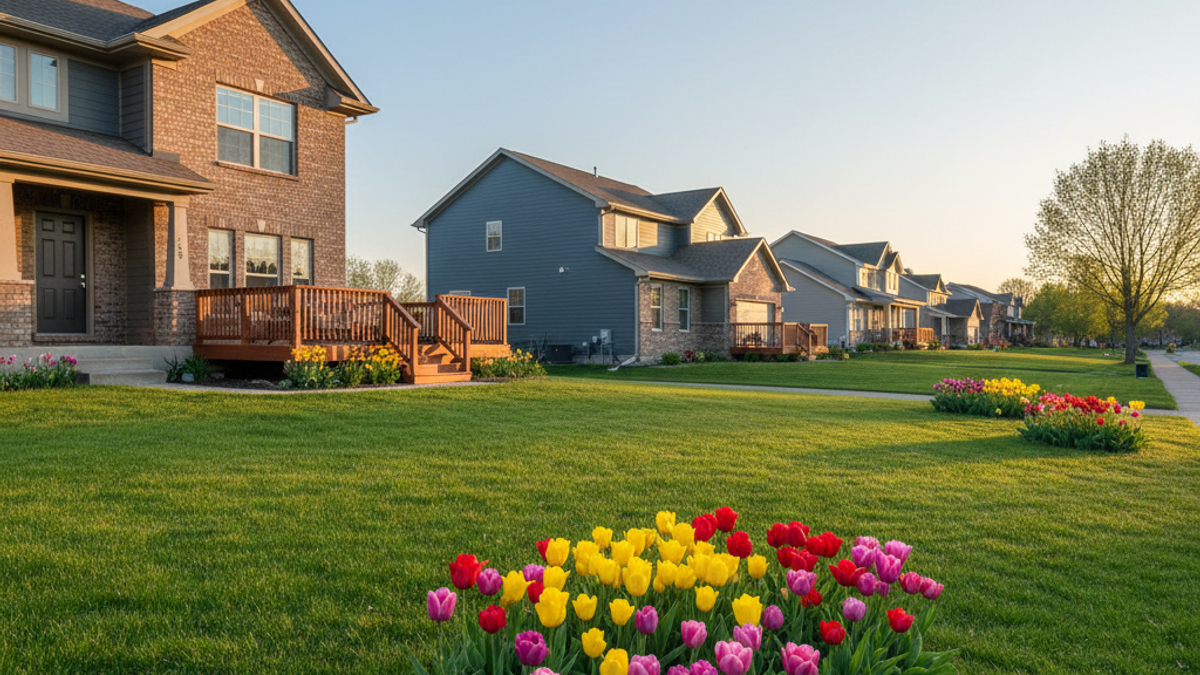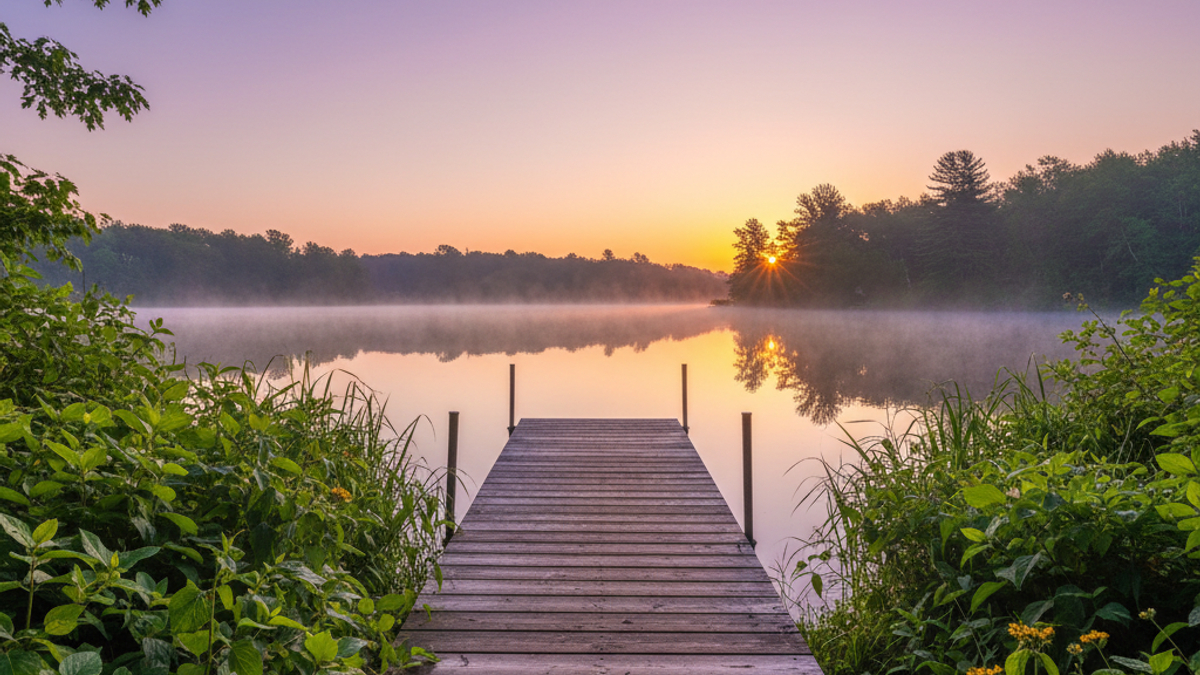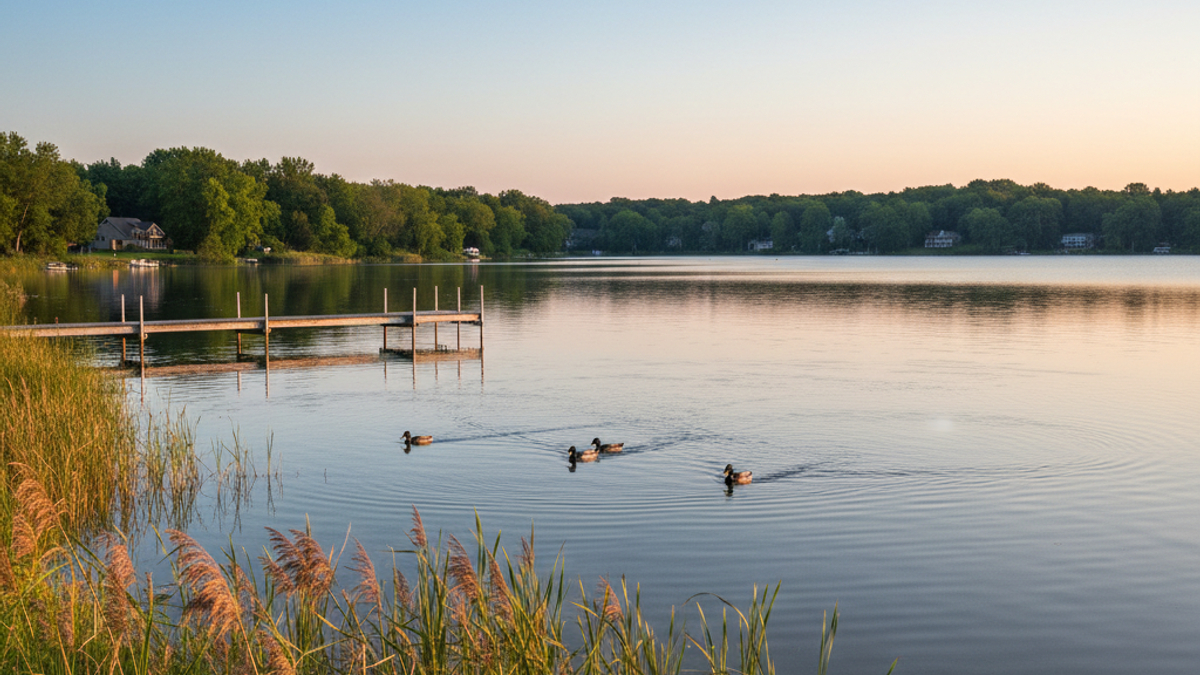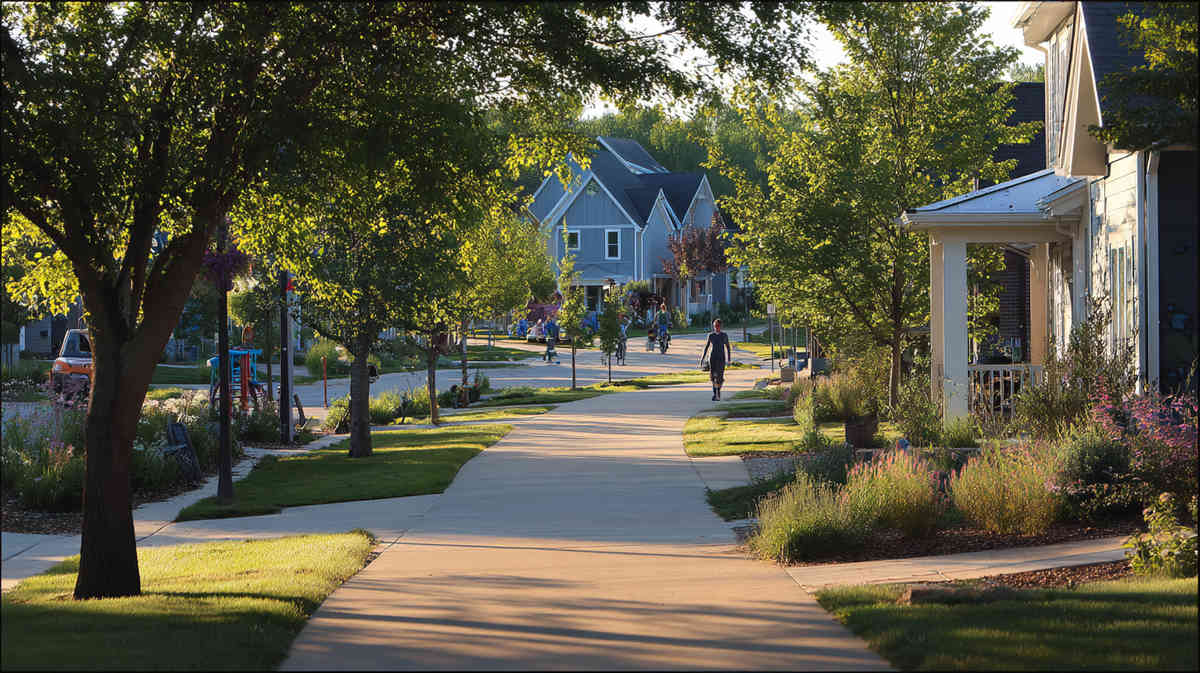First Glance: What’s the Buzz?
Blink and you’ll miss it—that moment when DeForest, Wisconsin goes from “small place north of Madison” to “wait, this could be home.” Population? Right around 12,400 heading into 2025 and trending upward. Median single-family sales price? $352k after a modest 4 % year-over-year climb. Days on market hovered near 21 in spring, down from 29 last fall, so yes, houses are moving. Builders have two new subdivisions in the works, and the village issued 140 residential permits in 2024, the most since 2006. Translation: people aren’t fleeing; they’re filing change-of-address forms in bulk.
That’s the headline. Now let’s dig into the stuff no quick Google search will tell you.
Price Tag Reality Check (and Why It Matters)
DeForest calls itself “an easy place to come home to.” Cute slogan, but does the math line up? Grab your calculator.
• Mortgage bite
A 10% down payment on that $352k median puts monthly principal and interest around $2,065 at today’s 6.4% 30-year rate. Factor in taxes—about $4,800 a year on the average parcel—and you land near $2,465 before utilities. Madison’s equivalent payment clears three grand.
• Inventory quirks you only notice in person
Split-levels from the late ’70s still dominate the south side. They show up in bunches every April because a ton of original owners list right after the snow melt. Ranch homes east of River Road? Scarce and bid up fast, mostly by buyers who refuse stairs.
• Sneaky HOA pockets
Three neighborhoods (Savannah Brooks, Conservancy Place, Rivers Turn) tack on $135–$310 in quarterly dues for common-area upkeep, trail plowing, the whole nine yards. Nothing outrageous, but if you are comparing apples to apples, keep the fee line item in sight.
• Renters get a breather
Average two-bed apartment clocks in at $1,560, about 22% below the Madison metro mean. Lease-ups at The Linde look sharp yet stay under two grand. That softens the landing for folks who need to test-drive the community before buying.
Final thought on dollars: Price curves look normal, not bubbly. The absorption rate sits at 2.1 months, which is technically a seller-leaning market but no fire drill. You can negotiate repairs without sellers laughing you out the door—provided your financing is tidy.
Daily Pulse: Culture, Coffee, and That Small-Town Hum
DeForest doesn’t do glitz. What it does is rhythm. You hear it at 6 a.m. when the Nabisco plant whistle in nearby Madison Valley drifts over the river, and again at sunset when everyone drags camp chairs to Fireman’s Park for music on the sled hill.
Stuff newcomers notice:
1. Friday fish fries at Lake Windsor Country Club. You don’t need a membership, just an appetite for perch and old-fashioneds. Show up twice and the bartender remembers your pour.
2. WBC (Windsor Breads Café). Locals use it as an informal coworking hub. Free Wi-Fi, giant cinnamon rolls, nobody side-eyes you for hogging a table.
3. Community build projects. The village asked for 200 volunteers to assemble a new playground last May. Four hundred came, power drills in hand. If you crave connection, that’s your on-ramp.
4. Schools double as gathering spots. DeForest Area High hosts a winter market in the gym loop: candles, sourdough, handmade soaps. Zero pretense. Think “mini-Etsy come to life.”
The Big Question: Will you fit? Let me level with you. If you need 24/7 nightlife, you’ll be in Madison three evenings a week. If you’re cool with an occasional brewery run (Yahara River Brewing opens late July) and a monthly trivia night at Norske Nook, you’ll settle right in.
Pro tip: Hang around the Yahara River Trail on a Saturday morning. Talk to three dog walkers. Their unfiltered take on local politics, snow removal, and school levies will tell you more than any brochure.
Commuting, Connectivity, and Remote Work Realities
Fifteen minutes—that’s the number every listing highlights. It’s roughly how long it takes to reach Capitol Square when traffic behaves. Still, here’s what GPS apps don’t reveal:
• The “Beltline bottleneck” window
Head to Madison between 7:10 and 7:40 a.m. and the merge at Highway 51 stacks up. Slip out either at 7:05 or 8:05 and you shave nine minutes. Little rhythm hack that locals swear by.
• Quiet carriages
Canadian Pacific freight sometimes parks on the spur line south of Windsor Road around 11 p.m. It serves the ethanol plant. Rarely loud, but if you buy near the tracks, you’ll notice the rumble in winter when windows are closed. Decide now whether that’s a deal-breaker.
• High-speed coverage
TDS, Spectrum, and AT&T all sling fiber to most streets west of Main. A raw speed test I ran from a spec home in Heritage Gardens hit 870 Mbps down. Translation: remote work is no hassle unless you move to the far northeast farms, where you’ll survive on 40 Mbps DSL.
• Park-and-ride cheat code
There’s a Park-n-Ride at North Towne off Highway V. Drop the car, catch Metro Transit Route 17, answer emails while someone else drives. Monthly pass runs $65, less than weekly Madison parking. Could be your sanity saver if you loathe I-90 shuffle.
Not commuting at all? All the better. Home offices here typically angle for backyard views, not neighbor fences. The lots are wide; the zoning board still likes green space. Build the standing desk of your dreams.
Play Outside: Four Seasons, Zero Excuses
DeForest sits where the Yahara River fattens into marshy bends. Translation: you get water, prairie, and soft woods without leaving town. Here’s how locals wring every ounce of fun out of it:
Spring
• Sandhill cranes land on the Conservancy prairie. Birders appear with lenses bigger than toddlers. Free show.
• Syttende Mai run in neighboring Stoughton draws fitness buffs; plenty of DeForest runners carpool south at dawn.
Summer
• Splash pad at Fireman’s Park morphs into kid central. Wait, you don’t have kids? Grab a cold brew at Stormy’s, stroll the trail, and cheer on the rec-league softball game instead.
• Kayak launch off Vinburn Road. Two-hour drift to Token Creek where a food-truck courtyard pops up on Saturdays.
Autumn
• Leaves go neon along the Upper Yahara Trail. Bring a camera or regret it.
• Pumpkin paddling. Yes, paddling inside hollowed giant pumpkins at the Harvest Fest. Locals take it dead serious.
Winter
• Sledding hill behind the library runs under lights until 9 p.m. Hot cocoa inside the community room meets you at the bottom.
• Snowshoe loops cut through a 117-acre conservancy. You borrow gear for free if you show a local library card.
Seasonal gear is expensive, right? Try the “gear swap closet” at DeForest Parks and Rec. Residents donate last year’s stuff. First-timers pick it up for free. The only catch: return something when you outgrow it.
All this chatter boils down to one truth: if you move here and stay indoors all year, you’ll be the exception.
Future-Proofing: What’s Coming Down the Pike
You are not just buying a house; you’re buying tomorrow’s version of DeForest. A few things that will shape your decision:
1. North-side growth corridor
The village rezoned 300 acres along Highway 51 for mixed-use. Expect a grocery anchor (rumor says Hy-Vee) plus 1,000 housing units over ten years. Early buyers along Holum Street could ride a value bump once retail lands.
2. Solar overlay district
Public Service Commission approved a 75-megawatt solar farm outside the east edge. Construction starts 2026. Good news: local property tax relief, potential utility credits. Bad news: heavy equipment traffic on County Road CV for 18 months.
3. High-school expansion
Referendum already passed. More classrooms, turf stadium, student-run coffee shop inside the commons. Opens 2027. People with long horizons see this as a magnet for resale demand.
4. Rail discussion
Quiet whispers about a commuter rail spur from Portage to Madison that could stop in DeForest. Still conceptual, but if you’ve ever watched property values along new rail lines, you know the outcome. Keep one eye on DOT planning sessions.
Plan on settling long term? These projects matter more than the color of the kitchen cabinets today.
So, Is DeForest Calling Your Name?
You just scrolled through house prices, cinnamon rolls, freight train schedules, pumpkin boats, and the solar farm rumor mill. Take a breath. If a place with big-town conveniences and small-town rituals sounds right, DeForest keeps the porch light on. You will still drive to Madison for concerts, sure. Yet the moment you cross Token Creek, traffic thins, stars brighten, and life decelerates.
That balance is why people stay. And why more are coming. Your move.
FAQs About Moving to DeForest
1. What is the average property-tax rate in DeForest?
Mill rate for 2024 sat near $21.35 per $1,000 of assessed value. On a $350k home (assuming 90% assessment ratio), budget roughly $4,800 a year.
2. Can I work in Madison but live in DeForest without an endless commute?
Most residents make the drive in 15–20 minutes outside rush windows. If your shift starts at 8 a.m. sharp, leave before 7:05 or after 8:05 to dodge the Beltline jam.
3. Is there reliable high-speed internet across the village?
Yes, fiber reaches nearly every platted subdivision west of Main Street. Speeds top 1 Gbps. Rural outskirts fall back on DSL or fixed wireless, so confirm the exact address before signing.
4. How competitive are home offers right now?
Median list-to-sale ratio hovers around 98%. Roughly one in three listings still gets more than one offer, yet wild bidding wars have cooled. Strong financing plus a flexible close date goes a long way.
5. I want to rent first—what should I expect?
Two-bedroom apartments average $1,560. Newer complexes might nudge that to $1,800 with underground parking. Lease lengths of 12 months rule the roost, but a few landlords negotiate six-month terms if you ask early in the cycle.
Move smart. Ask questions. And when you visit, grab a cinnamon roll at WBC—they’re practically a rite of passage.






